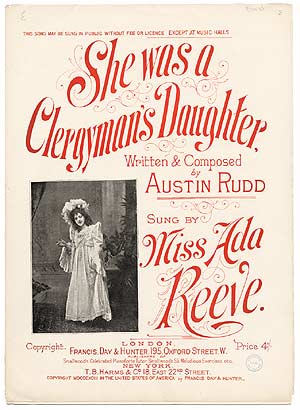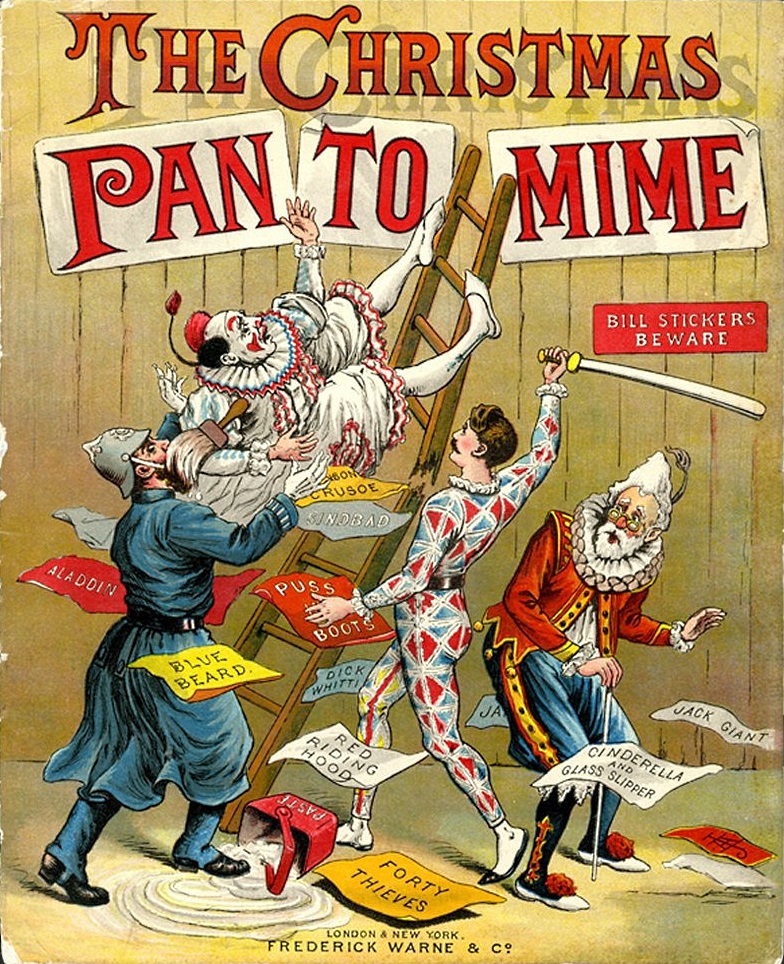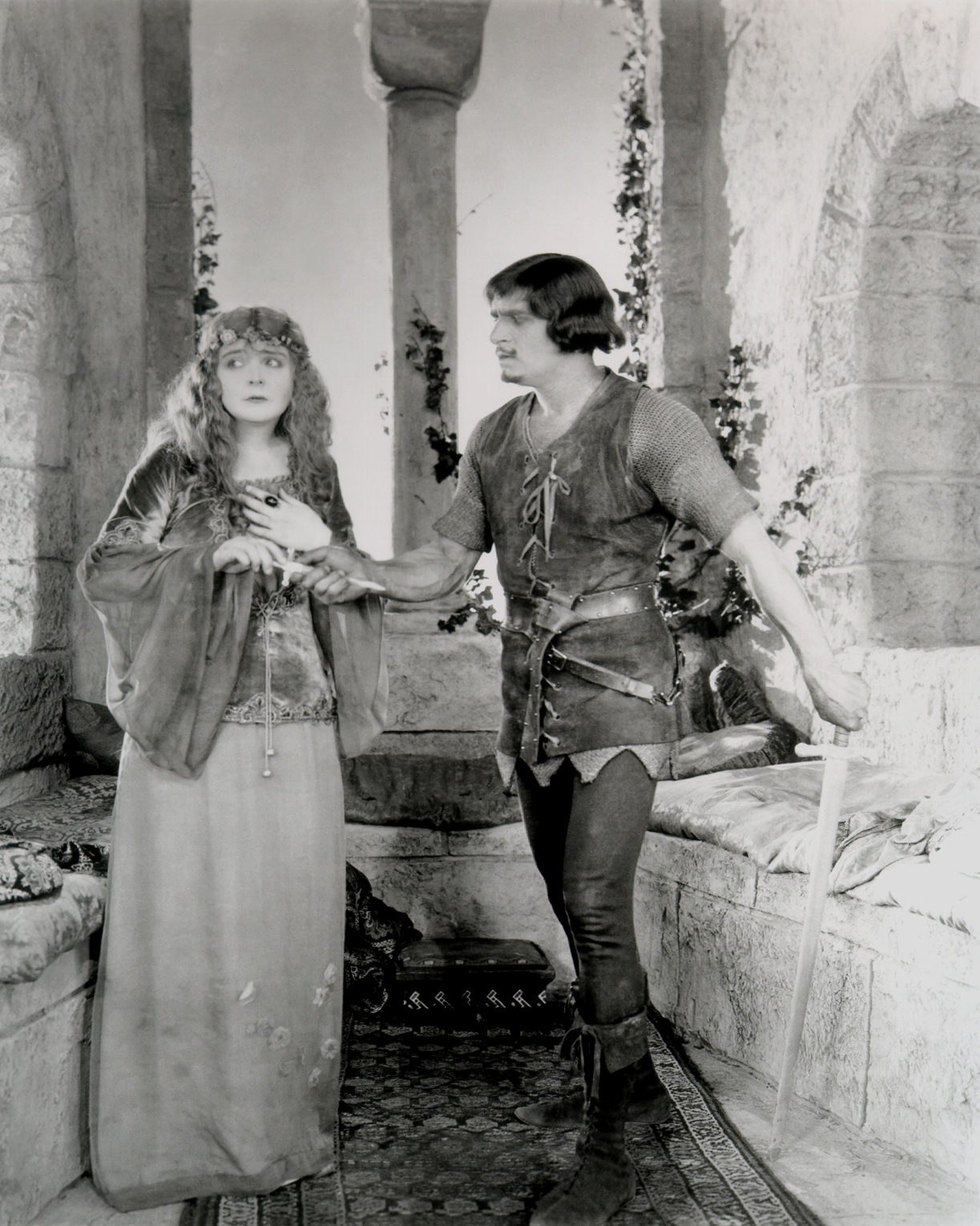|
Harry Jacobs (conductor)
Henry Osborne Jacobs (13 July 1888 – 17 January 1988) was an English musician best known as an accompanist, arranger and conductor for Ada Reeve, then settled in Australia, where he had a substantial career. Career Jacobs was born in Edgbaston, England, a son of musician Solomon Jacobs and his wife Louisa Jane Jacobs, née Stockham (1856–1928). Educated at Catholic schools, he showed early promise as a musician, though he had no formal training. At age 20 he was hired as accompanist, bandleader and arranger by the music-hall star Ada Reeve, as a member of her company touring Britain, South Africa and America. They toured Australia in 1914 and again in 1917–18, when Jacobs was billed as a comedian, and as "the singing conductor". He also proved to have talent as an actor. Their stay in Australia and New Zealand amounted to over a year, perhaps due to the War, but remained highly popular, and performed at many patriotic events. Reeve returned to Australia once more, for the ... [...More Info...] [...Related Items...] OR: [Wikipedia] [Google] [Baidu] |
Ada Reeve
Ada Reeve (born Adelaide Mary Reeves, 3 March 1874 – 5 October 1966) was an English actress of both stage and film. Reeve began to perform in pantomime and music hall as a child. She gained fame in Edwardian musical comedies in the 1890s. Reeve found considerable success on tour in Australia, South Africa, America and other places in pantomime, variety and vaudeville in the new century. At the age of 70 she began a film career, which she pursued for over a dozen years. Early career Adelaide Mary Reeves was born in London on 3 March 1874. Her father was Samuel Isaacs, an actor who changed his name to Charles Reeves, and her mother was Harriet Reeves (née Seaman), a dancer. She was of Jewish descent. She made her first appearance on the stage at the age of four in the pantomime ''Red Riding Hood'' on Boxing Day 1878 at the Pavilion Theatre, Whitechapel and continued to play in pantomimes. As a young child, she toured for several years with the Frederick Wright Dramatic Com ... [...More Info...] [...Related Items...] OR: [Wikipedia] [Google] [Baidu] |
Elwood, Victoria
Elwood is an inner suburb in Melbourne, Victoria, Australia, 8 km south-east of Melbourne's Central Business District, located within the City of Port Phillip local government area. Elwood recorded a population of 15,153 at the 2021 census. Elwood Beach is a popular bayside beach destination during summer, where the beaches are used recreationally for windsurfing, cycling, cricket and walking. The suburb is known for its mix of Edwardian and Interwar architecture character, its beaches and its leafy streets, many of which are lined by London Plane trees. History The earliest inhabitants and traditional owners of the area now covered by the City of Port Phillip were the Yalukit Wilum, one of the five clans of the Boon Wurrung, known as the coastal tribe, and who were members of the Kulin nation. They inhabited the swampy areas below Emerald Hill and the sandy-ridged ti-tree covered coastline, which extended from St Kilda to Fishermans Bend (Port Melbourne). The Abor ... [...More Info...] [...Related Items...] OR: [Wikipedia] [Google] [Baidu] |
Palais Pictures
The Palais Theatre (originally Palais Pictures) is a historic picture palace located in St Kilda, an inner suburb of Melbourne, Victoria, Australia. With a capacity of nearly 3,000 people, it is the largest seated theatre in Australia. Replacing an earlier cinema of the same name destroyed in a fire, the new theatre, designed by Henry Eli White, opened in 1927. Sitting adjacent to Luna Park, it helped to establish the St Kilda beach foreshore as an entertainment precinct, and remains an iconic landmark in the area. Over time, it became known primarily as a music venue, and has also hosted ballet performances, operas and stand-up comedy shows. The Palais is included on the Victorian Heritage Register, and in 2015, it was inducted into the Music Victoria Hall of Fame. History The Palais Theatre was developed by the Phillips brothers (Leon, Herman and Harold), who hailed from Spokane, Washington. Their first venture here, with fellow American showman James Dixon Williams ... [...More Info...] [...Related Items...] OR: [Wikipedia] [Google] [Baidu] |
The Daily Telegraph (Sydney)
''The Daily Telegraph'', also nicknamed ''The Tele'', is an Australian tabloid newspaper published by Nationwide News Pty Limited, a subsidiary of News Corp Australia, itself a subsidiary of News Corp. It is published Monday through Saturday and is available throughout Sydney, across most of regional and remote New South Wales, the Australian Capital Territory and South East Queensland. A 2013 poll conducted by Essential Research found that the ''Telegraph'' was Australia's least-trusted major newspaper, with 49% of respondents citing "a lot of" or "some" trust in the paper. Amongst those ranked by Nielsen, the ''Telegraph'' website is the sixth most popular Australian news website with a unique monthly audience of 2,841,381 readers. History ''The Daily Telegraph'' was founded in 1879, by John Mooyart Lynch, a former printer, editor and journalist who had once worked on the ''Melbourne Daily Telegraph''. Lynch had failed in an attempt to become a politician and was looking ... [...More Info...] [...Related Items...] OR: [Wikipedia] [Google] [Baidu] |
Gustave Slapoffski
Gustave Slapoffski (20 August 1862 – 3 August 1951) was an English musician who performed as a violinist and conductor in Britain for two decades, followed by a conducting and film scoring career in Australia over the next three decades. The son of a violinist, Slapoffski graduated the Royal Academy of Music in 1879 and began his own career as a violinist in the British provinces and then at London theatres, where he was eventually first violin in the orchestra at the Opera Comique and then with the Carl Rosa Opera Company. By the mid 1890s, he was assistant conductor for Carl Rosa and, in 1897, became principal conductor. In 1900, together with his second wife, Carl Rosa soprano Lillian Williams, he moved to Australia to conduct opera for George Musgrove. He also conducted tours and performances of such notable performers as Nellie Melba. During the First World War, Slapoffski wrote the scores to accompany the action on screen during silent films and conducted the orchest ... [...More Info...] [...Related Items...] OR: [Wikipedia] [Google] [Baidu] |
Minnie Everett
Minnie Everett (28 June 1874 – 7 June 1956) was an Australian ballet-mistress and producer, closely associated with the J. C. Williamson's company. She was the world's first woman producer of Gilbert and Sullivan operettas. History Everett was born in Beaufort, Victoria to Eliza Ann Everett, née Hardy, (c. 1836 – 24 August 1906) and George Everett, a bricklayer, later builder, migrants from England. After the family moved to Melbourne, Minnie attended Bell Street State School, where her talent for dancing was encouraged by a teacher, M. Massartie, who also inculcated in her a love of the French language. Her first stage experience was a small part in the Leopold troupe's production of '' Uncle Tom's Cabin''. At age 13 she was engaged by the Simonsen Grand Italian Opera Company, who were playing at the Alexandra Theatre (later Her Majesty's), under ballet-mistress Emilia Pasta. In 1888 she appeared for Williamson, Garner and Musgrove in the pantomime ''Sinbad the Sailor'' a ... [...More Info...] [...Related Items...] OR: [Wikipedia] [Google] [Baidu] |
Tivoli Theatre, Melbourne
The Tivoli Theatre was a major performing arts venue in Melbourne's East End Theatre District, located at 249 Bourke Street. The theatre's origins dated from 1866, with various remodelling and rebuilding throughout its history. Its final building opened as the New Opera House in 1901, and was renamed the Tivoli in 1914 when it joined the Tivoli circuit. The Tivoli eventually closed in 1966. Early years In the years following the Victorian gold rush, Melbourne's population and affluence was thriving, and entertainment venues were regularly established. One such venue was the Australia Hall, a small variety theatre build above livery stables. The Australia Hall opened on 2 November 1866, and was described as "of the exceedingly unpicturesque order of architecture." It was eventually redecorated and rechristened several times, before burning down in 1869. Three years later, in 1872, a new theatre was erected on the site by tramway pioneer Henry Hoyt and George H. Johnson. Opening o ... [...More Info...] [...Related Items...] OR: [Wikipedia] [Google] [Baidu] |
Hamilton Webber
Hamilton Webber was an Australian composer best known for his long association with Cinesound Productions Cinesound Productions Pty Ltd was an Australian feature film production company, established in June 1931, Cinesound developed out of a group of companies centred on Greater Union Theatres, that covered all facets of the film process, from produ .... He also worked extensively in the theatre. The songs he wrote for the Fuller brothers' pantomime ''Mother Goose'' were praised by Harry Jacobs, among others. References External links * {{DEFAULTSORT:Webber, Hamilton Australian male composers Australian composers Year of birth missing Year of death missing ... [...More Info...] [...Related Items...] OR: [Wikipedia] [Google] [Baidu] |
Pantomime
Pantomime (; informally panto) is a type of musical comedy stage production designed for family entertainment. It was developed in England and is performed throughout the United Kingdom, Ireland and (to a lesser extent) in other English-speaking countries, especially during the Christmas and New Year season. Modern pantomime includes songs, gags, slapstick comedy and dancing. It employs gender-crossing actors and combines topical humour with a story more or less based on a well-known fairy tale, fable or folk tale.Reid-Walsh, Jacqueline. "Pantomime", ''The Oxford Encyclopedia of Children's Literature'', Jack Zipes (ed.), Oxford University Press (2006), Pantomime is a participatory form of theatre, in which the audience is encouraged and expected to sing along with certain parts of the music and shout out phrases to the performers. Pantomime has a long theatrical history in Western culture dating back to the era of classical theatre. It developed partly from the 16th century ... [...More Info...] [...Related Items...] OR: [Wikipedia] [Google] [Baidu] |
The Herald (Melbourne)
''The Herald'' was a morning and, later, evening broadsheet newspaper published in Melbourne, Australia, from 3 January 1840 to 5 October 1990, which is when it merged with its sister morning newspaper '' The Sun News-Pictorial'' to form the '' Herald-Sun''. Founding The ''Port Phillip Herald'' was first published as a semi-weekly newspaper on 3 January 1840 from a weatherboard shack in Collins Street. It was the fourth newspaper to start in Melbourne. The paper took its name from the region it served. Until its establishment as a separate colony in 1851, the area now known as Victoria was a part of New South Wales and it was generally referred to as the Port Phillip district. Preceding it was the short-lived '' Melbourne Advertiser'' which John Pascoe Fawkner first produced on 1 January 1838 as hand-written editions for 10 weeks and then printed for a further 17 weekly issues, the '' Port Phillip Gazette'' and ''The Port Phillip Patriot and Melbourne Advertiser''. But wit ... [...More Info...] [...Related Items...] OR: [Wikipedia] [Google] [Baidu] |
Robin Hood (1922 Film)
''Robin Hood'' is a 1922 silent adventure film starring Douglas Fairbanks and Wallace Beery. It was the first motion picture ever to have a Hollywood premiere, held at Grauman's Egyptian Theatre on October 18, 1922. The movie's full title, under which it was copyrighted, is ''Douglas Fairbanks in Robin Hood''. It was one of the most expensive films of the 1920s, with a budget estimated at about one million dollars. The film was a smash hit and generally received favorable reviews. Plot The opening has the dashing Earl of Huntingdon besting his bitter enemy, Sir Guy of Gisbourne, in a joust. Huntingdon then joins King Richard the Lion-Hearted, who is going off to fight in the Crusades and has left his brother, Prince John, as regent. The prince soon emerges as a cruel, treacherous tyrant. Goaded on by Sir Guy, he usurps Richard's throne. When Huntingdon receives a message from Lady Marian Fitzwalter, his love interest, telling him of all that has transpired, he requests per ... [...More Info...] [...Related Items...] OR: [Wikipedia] [Google] [Baidu] |
Tons Of Money (play)
''Tons of Money'' is a farce by the British writers Will Evans and Arthur Valentine. It was co-produced by Tom Walls and Leslie Henson. In the story of the play, a hard-up inventor pretends to be his cousin, in order to escape the clutches of his creditors. First production The play was produced by Tom Walls and Leslie Henson. It was first given at the Shaftesbury Theatre, London, on 13 April 1922, directed by E. Holman Clark.Parker, p. xxx Original cast *Sprules, butler – George Barrett *Simpson, parlourmaid – Ena Mason *Benita Mullett – Mary Brough *Louise Allington – Yvonne Arnaud *Aubrey Henry Maitland Allington – Ralph Lynn *Giles, gardener – Willie Warde *James Chesterman, solicitor – J. Robertson Hare *Jean Everard – Madge Saunders *Henry – Tom Walls *George Maitland – Sidney Lynn ::Source: ''Who's Who in the Theatre''. It ran for 737 performances, at the Shaftesbury and the Aldwych. It was at the time only the fourth non-musical show to surpas ... [...More Info...] [...Related Items...] OR: [Wikipedia] [Google] [Baidu] |






.jpg)
